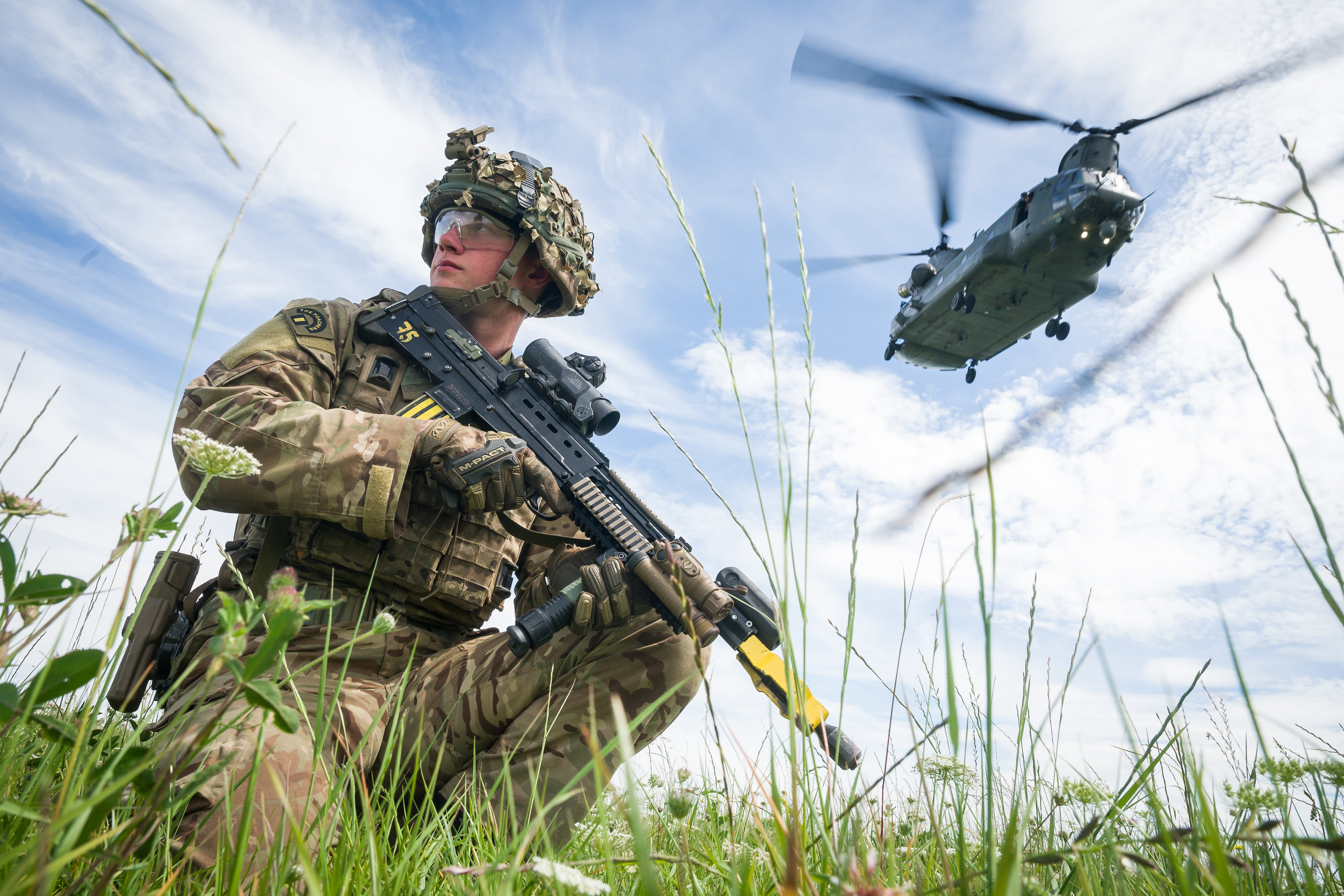UK war-games major conflict to test durability of weapons stockpiles
UK defence secretary John Healey says the exercise will improve the ability to innovate at wartime speed

Your support helps us to tell the story
From reproductive rights to climate change to Big Tech, The Independent is on the ground when the story is developing. Whether it's investigating the financials of Elon Musk's pro-Trump PAC or producing our latest documentary, 'The A Word', which shines a light on the American women fighting for reproductive rights, we know how important it is to parse out the facts from the messaging.
At such a critical moment in US history, we need reporters on the ground. Your donation allows us to keep sending journalists to speak to both sides of the story.
The Independent is trusted by Americans across the entire political spectrum. And unlike many other quality news outlets, we choose not to lock Americans out of our reporting and analysis with paywalls. We believe quality journalism should be available to everyone, paid for by those who can afford it.
Your support makes all the difference.The UK has begun a week-long mock-up of a major conflict to test how its ammunition supplies hold up in a war-time scenario.
The test run comes just three years after British stockpiles failed to see them through a 10-day exercise.
The Ministry of Defence began the war game on Monday morning. It is taking place at the Defence Academy in Shrivenham, Oxfordshire.
The simulation is intended to “stress-test” how supply chains of artillery munitions and drones would hold up during a major war with an unspecified adversary. It is the first war game to involve representatives of the defence industry alongside military commanders and officials.
Defence companies taking part in the exercise include submarine builder BAE Systems, missiles firm MBDA, American jet fighter business Lockheed Martin and ship builder Babcock.
Defence secretary John Healey told the BBC the exercise was intended to ensure the government and industry are “capable of innovation at wartime speed”.
He added that the exercise would work through “a range of scenarios in which we may be faced by conflict, we may be faced with protracted fighting and we may be faced with severe disruption in the supply chains”.
Russia’s full-scale invasion of Ukraine - where artillery and drones have proved pivotal to what has descended into a war of attrition - has brought into sharp relief the UK and Europe’s inability to sustain a long conflict.
Experts have long cautioned that Ukraine’s European partners have failed to increase defence spending in line with the growing threat posed by Vladimir Putin’s Russia, not just to Kyiv but to the wider continent.
Prior to Putin’s latest land-grab in February 2022, all Nato allies were only able to produce tens of thousands of 155mm artillery shells a year, according to officials. While that figure has increased to two million shells a year, it is still less than the estimated 3 million a year produced by Russia.
That is, in part, due to Moscow spending roughly 8 per cent of the country’s GDP on defence. Labour, however, says it intends to set a path to reaching a target of spending 2.5 per cent of GDP on defence by next year.
The latest war-gaming comes three years after the former head of the US Army in Europe, Lt Gen Ben Hodges, told MPs the British Army rapidly ran out of ammunition during a previous exercise.
He said that the entire British Army’s stocks were exhausted before the 10-day exercise was complete.
Join our commenting forum
Join thought-provoking conversations, follow other Independent readers and see their replies
Comments